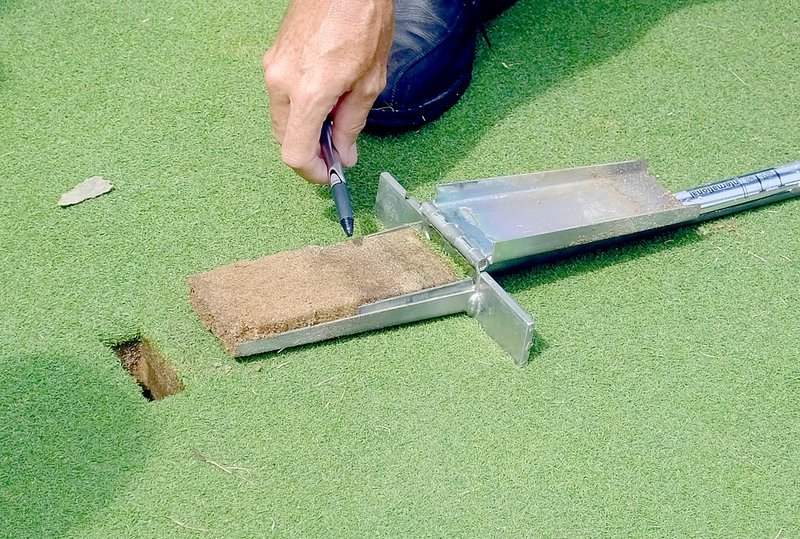Keeping a golf course in good condition is like balancing on the edge of disaster, POA Board member David Brandenburg said.
Bradenburg was talking about the grass. After a career in landscaping he knows how to keep grass growing and that cutting it short enough for a golf green means cutting off much of the plant's ability to feed itself. It's up to the golf course staff to balance the needs of the grass against the ideal playing surface. A misstep could mean dead grass on the course.
Last Wednesday, most of the board was on hand to hear USGA agronomist Steve Kammerer talk about the Bella Vista Property Owners Association courses. They were visiting Kingsland that morning.
"This is some of the best common Bermuda I've seen," Kammerer said.
He was on the fairway of the Kingsland's hole No. 4, which had been covered with creek gravel during the most recent floods. Large piles of gravel are still shoved to the edge of the fairway. Course Superintendent Reed Holly estimated that he had moved about 100 truckloads out.
After conferring with Kammerer for a few minutes, Holly said he thought the fairway would be less damaged if they were comprised of a hybrid Bermuda like 419. The hybrids establish themselves with a thicker mat. It's more difficult for rocks to penetrate the grass cover, making cleanup easier.
On the No. 11 green, Kammerer demonstrated some of his tools which, he said, sometimes bring questions at airport security. He uses a small, round cylinder to remove a sample that he stores in a plastic bag. He also has a larger soil sampler that will cut and remove a plug of soil that's about four inches across and goes down to about six inches deep. He prefers to use the smaller tool and take several samples from around the green.
He showed off a lens that clips onto his iPhone and magnifies the subject of photos. He bought the device on Amazon and it's marketed as a counterfeit bill detector, he explained. Once the photo is taken, it can be transferred to a computer monitor so it's easy to see fungus or other problems.
Kammerer also toured the other courses and spoke to a group assembled for the Joint Advisory Committee on Golf meeting.
He called the work currently underway at the Highlands innovative, explaining that replacing the collars around the greens improves drainage on the greens. That drainage is vital.
He also saw some winter damage at Scotsdale which happened when the tarps that cover the Bermuda greens when the temperature drops were blown off. There are products available to spike the tarps down to stop that, he explained. Aside from the winter damage, the new greens at Scotsdale look good, he said.
Kammerer is also a fan of the new bunker liners that are in use at Scotsdale and the Country Club. The liners keep the rocks out and the sand in. While there is some up-front expense, they will pay for themselves eventually, he promised.
While Kammerer warned against overseeding the courses, a practice that allows green grass all year, he didn't recommend painting the dormant Bermuda grass either. Golf courses paint Bermuda, he said, when members demand a green playing surface year-round, but the paint can be expensive and difficult to apply. Paint usually takes more than one application and not everyone will agree on the best color, he said.
Golf Maintenance Director Keith Ihms said that the POA doesn't have the right equipment to paint fairways. His staff already paints greens.
Ihms said his course superintendents learned a lot form Kammerer's visit.
General News on 08/23/2017
